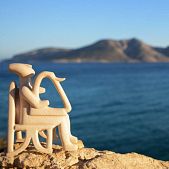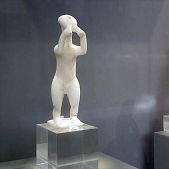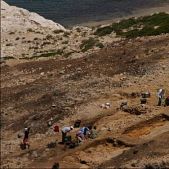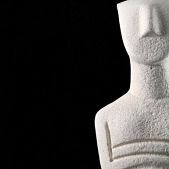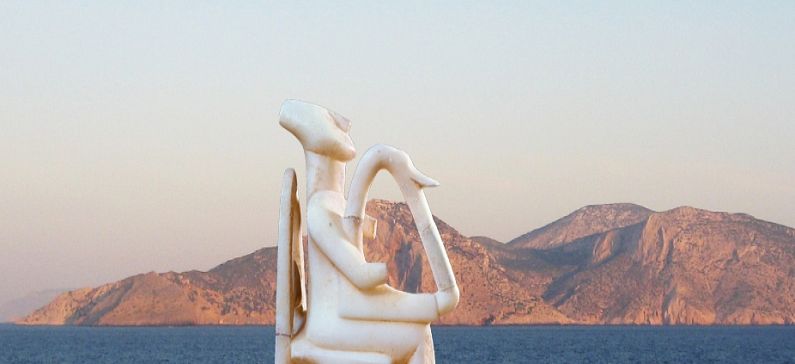
New finds on Keros confirm its important role in antiquity
One of ancient Greece’s most enigmatic sites has revealed new levels of complexity after a decade of investigation. An impressive staircase and a causeway linking two parts of the Cycladic site of Daskalio Kavos are as old as the Pyramids, according to Times article.
“The world’s earliest maritime sanctuary” as described by British archaeologist Sir Colin Renfrew lies on the remote and uninhabited island of Keros in the southern Cyclades, between the larger centres of Naxos and Santorini, which were also important in the Bronze Age. Kavos is a stony, scrub-covered hillside, Daskalio a rocky islet just offshore linked by a now-submerged causeway. Where the causeway meets the steep slope at Kavos, the most recent excavations have uncovered the stairway, mounting the hillside towards the two areas of “ritual depositions”.
Thousands of fragmented parts of cycladic figurines as well as basins and ceramic vessels were found. The most impressive is that no whole figurine has been found or parts that ‘fit’ together meaning that the parts arrived to Kavos already fragmented. Moreover none of the over 500 figurine parts or of the 2,500 strange parts of marble basins have not found its other part in any cycladic object found elsewhere.
In 2008 were found on Daskalio the remnants of a 16m-long stone sanctuary dated between 2,500 and 2,400 BC which had been abandoned in 2,000 BC. According to Renfrew it is the largest known building of Early-Cycladic Period which has the most impressive public architecture in Cyclades that is found nowhere else in the wider region of the Aegean Sea. It was the most important ritual center in the Cyclades in the middle of the Aegean from early 3,000 BC , 500 years earlier that any other ritual center in the prehistoric Aegean, said professor Renfrew.

